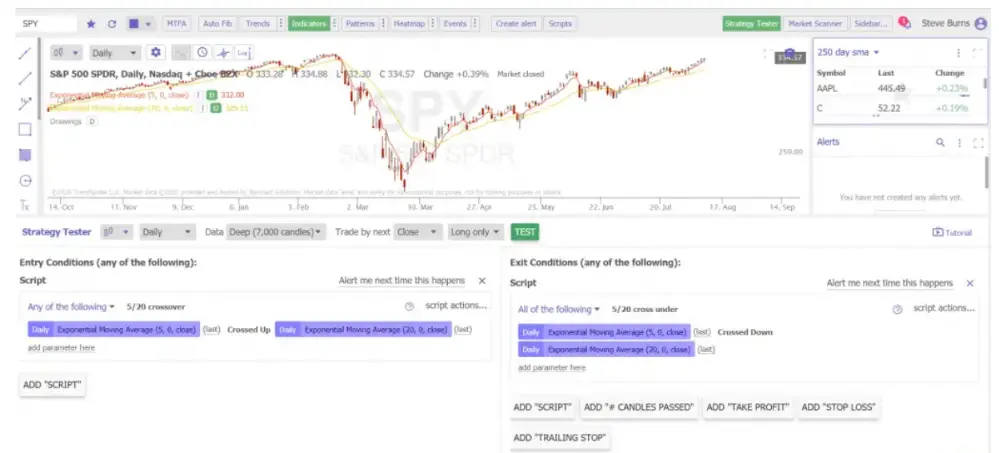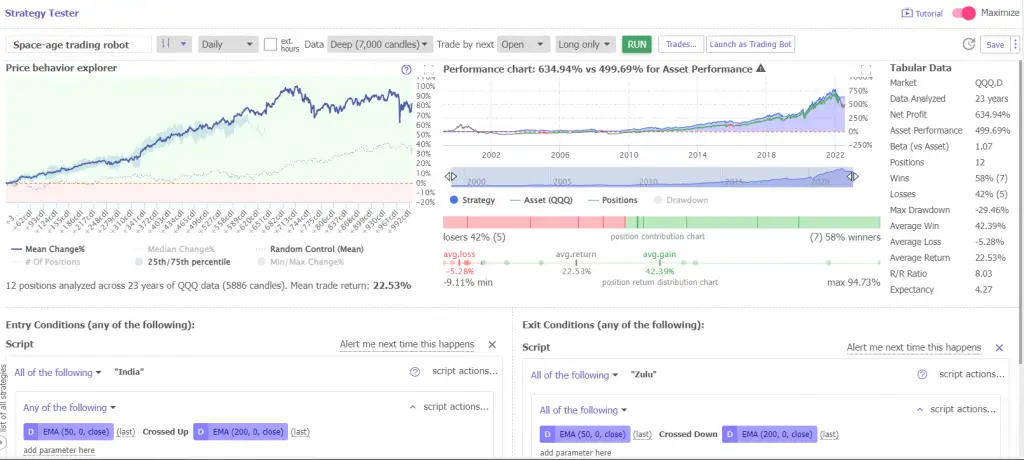Stock backtesting software is a tool for doing historical research to discover if mechanical technical entry and exit signals would have lead to profitability in the past. Backtesting software has a store of historical price data and a platform for inputting reasons for getting in and getting out of a market using that data. The job of the trader is to use the past historical price data to quantify the validity of signals through an equity curve whether the system would have lead to overall profits in the past. It is also important to realistically access whether you would have been able to psychologically ride the ups and downs of not only the wins but the losses in real time.
Backtests are done on a software platform that has the historical data and the ability to enter signals and then test to see how they did. Backtesting software can be very simply and user friendly or very complicated requiring coding knowledge. Some traders still use Excel spreadsheets to backtest their price action systems but this can be very time consuming. Backtesting is done by giving input to the software with entry signals and exit signals that create dynamics of where to get in and where to get out based on price action or technical indicators.
A backtest using software is a look back at how a quantified trading system would have performed in the past. While a profitable backtest on historical data does not guarantee that the same process will be profitable in future markets, if it didn’t work in the past it is almost certain to not work in the future.
Backtesting using software increases the probabilities that since a signal worked on past data it could also work on future price action because the signals were proven to navigate volatility and create more total profits than it had in losses. Backtesting is used to see if the trading principles of a trading system are valid at creating either big wins and small losses or a high winning percentage with small losses.

Screenshot of the TrendSpider.com chart and backtesting platform.What a trader should be looking for in system development is dynamics that create good risk/reward ratios through entries and trade management with stop losses and trailing stops as trades play out. The primary goal of trading systems is to capture market trends by staying on the right side of market momentum and also limiting the size of losses by not staying on the wrong side of a trend.
Some people will input profit targets for trades. A stop loss in comparison to a hypothetical profit target does create a quantified risk/reward ratio. A risk/reward ratio along with a high enough win rate can create a profitable system as long as losses are kept small and position sizing is managed properly based on volatility and open risk.
A backtest of signals should be performed on a watchlist of stocks, ETFs, currencies, or commodities that you plan to trade. All markets have different levels of volatility and magnitude of trends and each individual market should be backtested for validity of signals on its historical data. The best trading signals work across diverse markets.
The goal of backtesting software is to enable the trader to find repeatable mechanical signals that create profitable entry and exit dynamics to manage for bigger wins and smaller losses over the long term. The primary cause of a profitable backtest is by cutting losses short and letting winners run through the signal inputs. Trade signals must filter out most of the price action noise that causes over trading and instead signal the best opportunities to capture trends and swings in price action. Volatility can cause many signals to be unprofitable or underperform versus buy and hold investing in the same stock or index.
Using software to quantify profitable mechanical backtested signals also filters out much of the emotion of trying to decide what to do each day from your own opinion and prediction. Almost all traders do better when they move away from being an opinionated predictor to the follower of a systematic trading process. Your job becomes to follow signals and ignore your own ego and emotions when you quantify your process.
There is no Holy Grail backtest to find. There is just the system that you can confirm worked over multiple markets in the past and has a great potential for working in the present and future. It has to be a process that makes sense that you can follow with discipline over the long term.
Markets have changed over the past 30 years, but the nature of price action is something that does not change, markets continue to have up trends, downtrends, and go sideways. The job of backtesting software is to give you a tool to find the repeating patterns for profits.
“Patterns repeat, because human nature hasn’t changed for thousand of years” – Jesse Livermore
My personal favorite backtesting tools is the TrendSpider.com backtester for both simplicity of use and vast amount of capability.
For a shortcut and time saver on learning the basic principles of backtesting, check out my Backtesting 101 eCourse here.and my Moving Average Signals eCourse.

